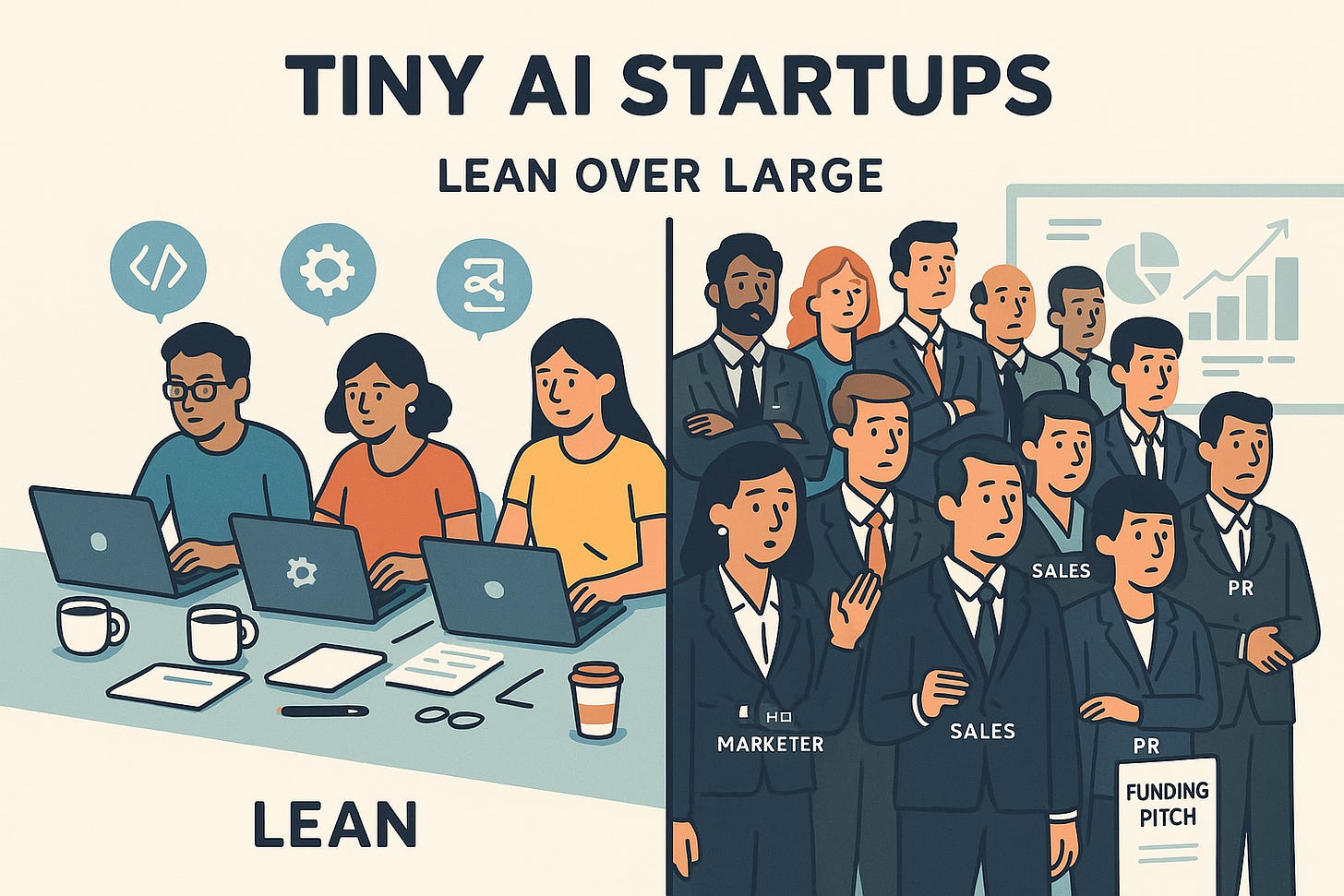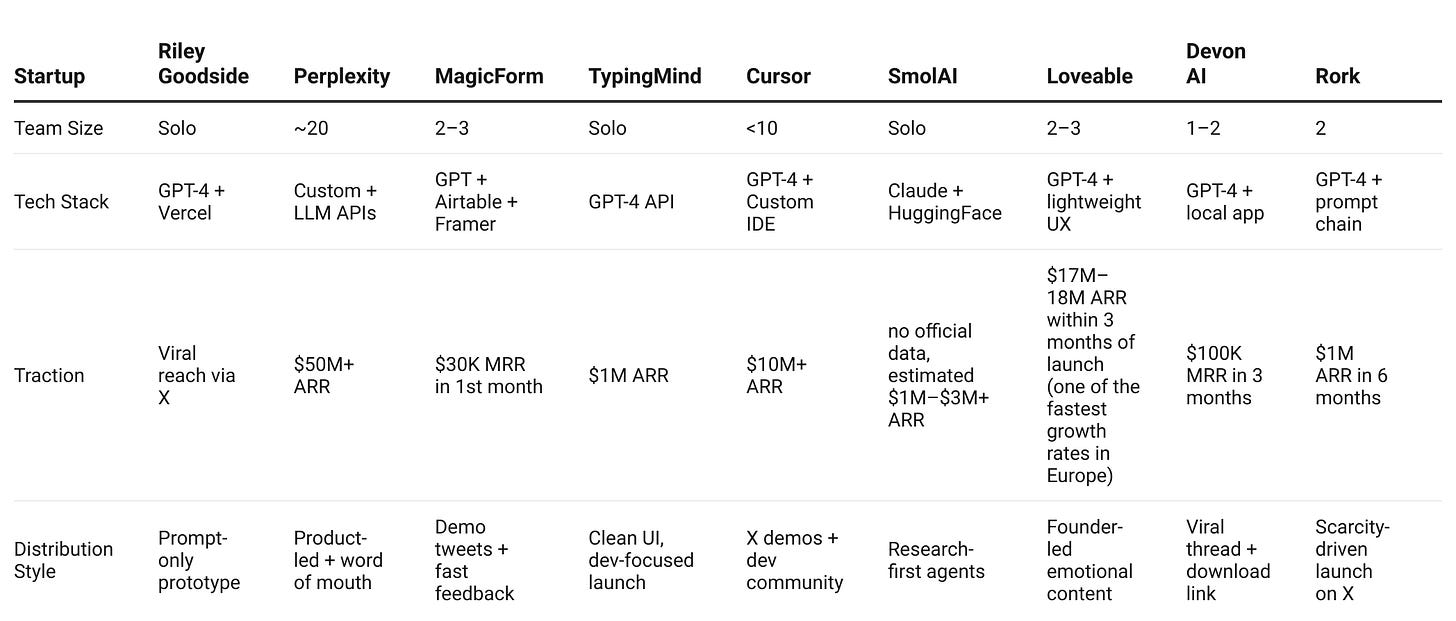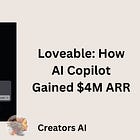How Tiny AI Startups Are Scaling to $10M+ ARR
New industry recipe for AI startups
Discover how 2–3 person AI startups are hitting $10M+ ARR by leveraging GPT APIs, viral launches on X and TikTok, and ultra-fast feedback loops—no funding, no fluff, just raw execution
.
In the last 12 months, we’ve seen something wild happen.
Tiny AI startups—just two or three people, often without a designer or even a fancy website—are crossing $1M, $5M, and even $10M in annual revenue. No VC rounds. No 50-person teams. Just a laptop, an LLM API (OpenAI) keys, and an X account.
What’s going on?
It’s not just about building faster. It’s about building differently. These founders are tapping into a new stack, a new way of shipping, and a new kind of product: small, AI-native, and ridiculously sticky.
Let’s break down how exactly this is happening—and what You can steal from their playbook.
Why Is This Now Possible?
A few years ago, this playbook didn’t exist. Today, it’s the only one that matters.
We’re in the middle of a platform shift. Not just in tech—but in how we build and market software. Here's how small AI teams are riding the wave to $10M+ ARR:
New Cycle: Foundation Models = New Infrastructure
GPT-4, Claude, Gemini, Mixtral, LLaMA 3—these models are the new cloud.
You don’t need a research team or even a training pipeline. You just call an API and wrap it in something useful.
Perplexity started as a search UI over LLMs (aka wrapper). It now does $50M+ ARR, with a lean, API-driven backend.
Cursor is an AI-native code editor. It reads your repo, writes PRs, and feels like a junior dev. Now doing $10M+ ARR with <10 people.
SmolAI builds agents that summarize research papers and auto-generate citations. One dev. HuggingFace + Claude. That’s it.
API-First, Not Product-Last
Top founders today don’t ask, “What can I design?” They ask, “What can GPT-4 already do that no one has wrapped properly?”
They skip the UX spec. They start with output—and build backwards.
Examples:
MagicForm was built in 3 days. It generates forms and workflows from a short prompt. Built on GPT + Airtable + Framer. First-month MRR? $30K.
TypingMind is just ChatGPT with a better UI. No model, no team, no secret sauce. Yet it hit $1M ARR in under a year.
Vibe > Brand
Forget ads. Forget pitch decks. Modern distribution is all about vibe: shipping in public, short demos, founder energy.
Examples:
Loveable went viral with a 30s TikTok showing the founder journaling through heartbreak—using her own product. 10K+ signups in 48 hours.
Devon AI posted one raw X thread with a screen recording. No landing page. No brand. It hit $100K MRR in 3 months.
These aren’t edge cases. This is the new normal.
From solo devs to tiny duos, founders are skipping decks and teams—and going straight to product, traction, and revenue.
Here’s a quick breakdown of who’s doing it, how, and what it looks like in the wild:
Mini Case Studies: Who’s Already Made $10M+?
Here’s a look at the small teams already breaking the $10M barrier—by moving fast, building in public, and letting products do the talking.
Cursor: The AI Dev Tool That Hit $300M ARR Without a Sales Team
Team Size: Cursor was founded by four MIT grads — Michael Truell, Sualeha Asif, Arvid Lunnmark, and Aman Sanger. In its early days (2023–2024), the team stayed under 10. As of mid-2025, it has grown to around 30—but that’s still lean for a company generating hundreds of millions in revenue.
Revenue:
December 2024: $100M ARR
March 2025: $200M ARR
May 2025: $300M ARR Cursor is one of the fastest-growing SaaS startups in history.
What It Does: Cursor is a fork of VS Code with GPT-4, Claude, and custom model integrations. It's not just a code editor—it's an AI pair programmer that understands your local context, helps you write and refactor code, and even explains it back to you like a teammate would.
How It Blew Up: Cursor didn’t run ads. They didn’t have sales. They launched fast and in public. Early demos on X—like one showing Cursor generating GitHub login flows from a prompt—went viral. Developers replied with featuequests, the team responded with live updates, and the product evolved in real time.
They embraced a product-led growth playbook, skipped the PM layer entirely, and scaled through vibe, speed, and execution.
In 2025, they raised a $900M Series B at a $9B valuation, backed by a16z, Accel, and Thrive Capital.
Read the full Cursor breakdown :
Loveable: Emotional AI That Turned a Side Project Into $70M ARR
Team Size: Founded by Swedish developer Anton Osika—previously at OpenAI and Google—and a small team of engineers from the open-source world. The crew behind GPT Engineer (which got 52K+ GitHub stars) reimagined their tooling into something far more accessible.
Revenue:
$4M ARR in the first 4 weeks
$17M in revenue within 90 days
By early 2025: $70M ARR and over 300K active users
What It Does: Lovable is an emotional AI assistant that helps people journal, reflect, and manage their mental state. It turns mood into motion. Think of it as ChatGPT—but trained to actually care how you’re feeling.
How It Took Off: The team didn’t chase VC. They shipped a working prototype, told their story on TikTok and X, and let the internet do the rest.
One viral post showed Anton building Lovable to help himself get through a rough day. That video hit a nerve. Suddenly, thousands of people were journaling with AI. The interface mimicked a chat—not a dashboard. No onboarding, no fluff. Just type how you feel.
Lovable refused to back down when Figma pushed back on their “Dev Mode” name. The product stayed honest, and so did their voice. That authenticity fueled explosive word-of-mouth.
Read the full Lovable case study :







